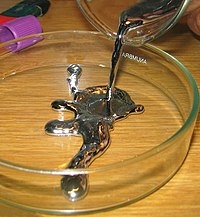
Common Buzzards wintering strategies as an effect of weather conditions and geographic barriers
Sign Up to like & getrecommendations! Published in 2021 at "Ecology and Evolution"
DOI: 10.1002/ece3.7793
Abstract: Abstract Aim Migration is a constantly changing adaptation due to the climate condition evolution. The struggle for surviving during harsh winter season is different across Europe, being more complex toward the inner parts of the… read more here.
Keywords: common buzzard; carpathian mountains; common buzzards; number ... See more keywords

Embedded lead shots in birds of prey: the hidden threat
Sign Up to like & getrecommendations! Published in 2017 at "European Journal of Wildlife Research"
DOI: 10.1007/s10344-017-1160-z
Abstract: In French wildlife rescue centers, veterinarians or volunteers often note embedded lead projectiles in X-rayed birds of prey that are not the cause of admission. To know if embedded lead in birds of prey may… read more here.
Keywords: embedded lead; lead shots; birds prey; blood lead ... See more keywords

Falconry petroglyphs in Iran: new findings on the nexus between ancient humans and birds of prey
Sign Up to like & getrecommendations! Published in 2021 at "European Journal of Wildlife Research"
DOI: 10.1007/s10344-021-01462-w
Abstract: Ethnoornithology is a multidisciplinary field of study that focuses on human-bird relationships and humans’ knowledge of the Earth’s avifauna. Falconry (the use of trained birds of prey—usually eagles, falcons, and hawks—to hunt wild animals) is… read more here.
Keywords: falconry petroglyphs; petroglyphs iran; petroglyphs; birds prey ... See more keywords

Anticoagulant rodenticide exposure and toxicosis in four species of birds of prey in Massachusetts, USA, 2012–2016, in relation to use of rodenticides by pest management professionals
Sign Up to like & getrecommendations! Published in 2017 at "Ecotoxicology"
DOI: 10.1007/s10646-017-1832-1
Abstract: Restrictions on second-generation anticoagulant rodenticides (SGARs) in the United States, which were partially implemented in 2011, prohibit the sale of SGAR products through general consumer outlets to minimize use by non-professional or non-agricultural applicators. This… read more here.
Keywords: use; toxicosis; massachusetts usa; four species ... See more keywords

Prevalence and antimicrobial resistance of Campylobacter from wild birds of prey in Spain.
Sign Up to like & getrecommendations! Published in 2021 at "Comparative immunology, microbiology and infectious diseases"
DOI: 10.1016/j.cimid.2021.101712
Abstract: Wild birds have been identified as a relevant reservoir of Campylobacter spp., therefore, a potential source of infection in humans and domestic animals. The objective of this study was to determine the occurrence of Campylobacter… read more here.
Keywords: prey spain; antimicrobial resistance; resistance; wild birds ... See more keywords

Distribution of polybrominated diphenyl ethers (PBDEs) in feather and muscle of the birds of prey from Beijing, China.
Sign Up to like & getrecommendations! Published in 2018 at "Ecotoxicology and environmental safety"
DOI: 10.1016/j.ecoenv.2018.08.056
Abstract: Polybrominated diphenyl ethers (PBDEs) in the feather and muscle of common kestrels (Falco tinnunculus), eagle owls (Bubo bubo) and little owls (Athene noctua) collected from Beijing, China were investigated. The concentrations of ∑23PBDEs in the… read more here.
Keywords: feather muscle; muscle; polybrominated diphenyl; diphenyl ethers ... See more keywords

Per‐ and polyfluoroalkyl substances in plasma and feathers of nestling birds of prey from northern Norway
Sign Up to like & getrecommendations! Published in 2017 at "Environmental Research"
DOI: 10.1016/j.envres.2017.06.019
Abstract: Abstract Plasma samples from nestlings of two top predators, White‐tailed eagle (Haliaeetus albicilla) and Northern goshawk (Accipiter gentilis) from northern Norway were analysed for a wide range of per‐ and polyfluoroalkyl substances (PFASs). Body feathers… read more here.
Keywords: plasma; white tailed; pfass; body feathers ... See more keywords

Occurrence of enteropathogenic bacteria in birds of prey in Italy
Sign Up to like & getrecommendations! Published in 2018 at "Letters in Applied Microbiology"
DOI: 10.1111/lam.12836
Abstract: The importance of wild birds as potential vectors of disease has received recent renewed empirical interest, especially regarding human health although information regarding the enteropathogenic bacteria in birds of prey continue to be scant. This… read more here.
Keywords: enteropathogenic bacteria; occurrence enteropathogenic; bacteria birds; prevalence ... See more keywords

A RETROSPECTIVE STUDY OF FEMORAL FRACTURES IN WILD BIRDS OF PREY: 119 CASES
Sign Up to like & getrecommendations! Published in 2021 at "Journal of Zoo and Wildlife Medicine"
DOI: 10.1638/2020-0192
Abstract: Abstract: A retrospective study was performed to describe patient and fracture characteristics, treatments, complications, and outcomes associated with femoral fractures in free-ranging birds of prey. Cases were identified from the electronic database and included raptors… read more here.
Keywords: fracture; femoral fractures; treatment; study ... See more keywords

Risk Factors and Prognosis for Humeral Fractures in Birds of Prey: A Retrospective Study of 461 Cases from 2000 to 2015
Sign Up to like & getrecommendations! Published in 2022 at "Journal of Avian Medicine and Surgery"
DOI: 10.1647/20-00093
Abstract: Abstract: The objectives of this retrospective study were 1) to characterize humeral fractures in raptors at a rehabilitation program, 2) to determine risk factors for closed and compound humeral fractures in the raptors, and 3)… read more here.
Keywords: compound; retrospective study; compound humeral; risk factors ... See more keywords

Fresh semen characteristics in captive accipitrid and falconid birds of prey
Sign Up to like & getrecommendations! Published in 2020 at "Acta Veterinaria Brno"
DOI: 10.2754/avb202089030291
Abstract: Artificial insemination (AI) is the most frequently used assisted reproductive technique for captive propagation of rare avian species. As semen quality is critical for reproductive success, baseline data are needed for evaluating and selecting the… read more here.
Keywords: artificial insemination; fertilization; peregrine; semen characteristics ... See more keywords